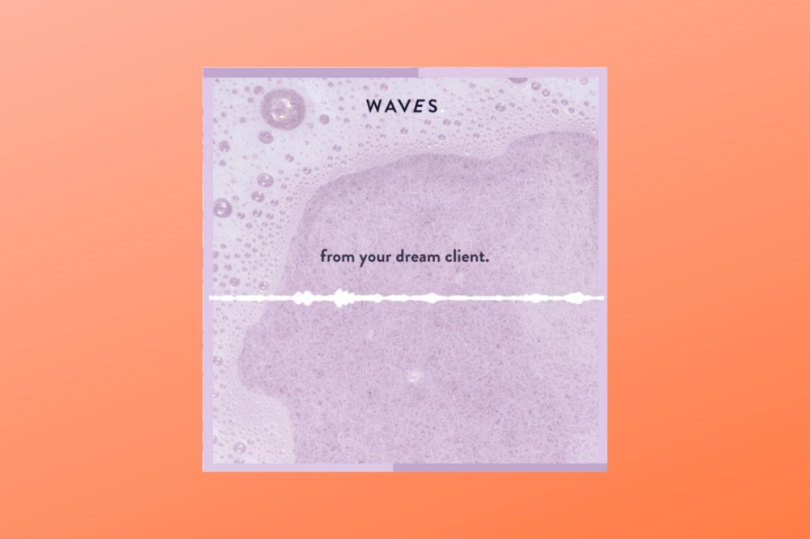Case studies are the middle children of marketing activities. Plenty of companies recognize their importance, and yet hardly any seem to prioritize them.
“It’s never at the top of somebody’s list,” Joel Klettke, a conversion copywriter and founder of Case Study Buddy, told Built In.
According to HubSpot’s 2020 State of Marketing Report, marketers named case studies as only the fifth-most-popular type of media for their content strategies, trailing behind videos, blogs, e-books and infographics.
Some marketers are baffled that companies continue to overlook and underutilize case studies in their content strategies. Especially since social proof can be so influential when it comes to buying decisions, and because case studies can be used and recycled across several marketing channels.
“You’re thinking about wrapping it up in a nice three-page PDF for sales and stopping there?”
“Marketers should repurpose case studies anywhere it makes sense,” Brooklin Nash, head of content at Sales Hacker, told Built In. “You mean to say you’re thinking about wrapping it up in a nice three-page PDF for sales and stopping there?”
Indeed, most do. Or they’ll stick case studies on their websites “in some sad little resources section that never gets updated or properly linked to,” Klettke said.
The apathy frustrates him, because case studies have utility for acquisition, nurturing, retention and upselling when done right.
If you’re looking to get the most impact from your case studies, consider these five approaches to promoting them.
Ways to Promote Case Studies
- Paid social ads
- Audiograms for social channels
- Email sequence during trial periods
- Outreach email for cold prospects
- Outreach email for lost leads
Paid Social Ads
Paid ads on social media feeds are prime real estate for material plucked from case studies.
In Nash’s view, 99 percent of a company’s paid social ads should include testimonials.
“It can be as simple as taking the two most compelling stats and two most compelling quotes from your case study and wrapping them up in a nice paid ad wrapper,” he said.
Klettke has seen case studies effectively repurposed into paid social ads too.
He recalled that one company used paid social ads to push people toward a case study, which it presented without an option to make a purchase in the moment. But the company later remarketed to users who clicked those ads. The follow-up ads rehearsed the pain points and outcomes users had read about earlier.
“By planting the seed with a story, they manage to stay memorable, sell without selling, and then do really well with that follow-up campaign,” Klettke said. “Especially for spaces with longer buying cycles, that can be very effective.”
Email Sequences During Free Trial Periods
For many companies, but especially B2B SaaS companies, there’s often a period of time in which potential customers take the product for a free test drive to get a better sense of whether signing up for the long haul, or upgrading to a higher price tier, is right for them.
Companies shouldn’t wait and see what happens during this time. Instead, they should provide a relevant case study in the form of an email.
The case study in this context should highlight a customer who made the purchase or upgrade that resulted in a solution that the prospective customer is looking for.
Seeing someone else find the type of success they’re looking for might be enough to get the prospect over the fence.
Outreach Emails for Cold Prospects
HipLead, the creator of a B2B lead database tool, ran an experiment testing the efficacy of social proof. It found that mentioning a famous customer in a cold outreach email tripled the number of replies from interested prospects.
In other words, if you’re going whale hunting, it helps to mention the whales you’ve already caught. This is where case studies can come in handy.
Quotes and statistics relevant to the prospect can be pulled from the case study and included in an outreach email.
Hearing words of excitement from a recognizable, delighted customer, rather than the “Can we hop on a quick call?” song and dance from a salesperson — no offense to salespeople — can go a long way toward lowering a prospect’s guard and warming them up.
Outreach Emails for Lost Leads
Case studies can be effectively repurposed into yet another type of email — the kind aimed at leads who once showed interest and were qualified, but for whatever reason, the timing wasn’t right.
If you get your hands on a customer success story that’s bound to resonate with them, it might be a good time to restart the conversation and reach out to them with the case study (not a hard sell).
Klettke suggests reopening the conversation with something along the lines of, “Hey, we just had this customer success story roll through, and it reminded me a lot of our conversation, because their goals were similar,” and dropping the case study in the email.
It’s a natural, low-pressure conversation starter that lets your happy customers do most of the talking for you.

Audiograms
Sometimes, prospective customers just don’t want to read.
That’s fine, because a customer success story usually begins in audio form anyway, as a recorded conversation between the case study writer and the customer.
If the customer gives their permission to do so, you can repurpose this audio into an audio-visual format called an audiogram, which can be uploaded to social channels like Instagram and YouTube.
Audiograms are pieces of content that pair short audio clips with subtitles and pictures to grab the users’ attention.
The most common way to make one is by chopping the conversation up into short audio segments. Then, through video editing software, you sync the audio with animated text captions that appear on screen. You can also add the customer’s headshot and an animated waveform for extra flair.
Through audiograms, you can reuse your case study material into social-friendly content that reaches new audiences.
Pressing play on an Instagram Story has a different effect than downloading a PDF from a sales page.
How to Create Case Studies for High Impact
If case studies are worth promoting strategically, they’re worth creating strategically too.
Case studies often begin as happy accidents: A customer is pleased with the service a company provided them, so they offer to share their success story for the company to adapt into content.
However, Klettke suggests that marketers approach case studies with much more deliberation and strategic forethought. They can do this by determining what sort of business their company needs to go after, or which of their products they need to showcase better, and setting out to find customer success stories that spotlight that specific angle.
If marketing is fishing, then case studies should be shaped more like spears than nets. Collecting the right information from the right customers helps sharpen the edge.
“You shouldn’t play down the customer’s perspective.”
Some people are skeptical toward case studies; they find them too unrelatable. After all, case studies are mostly highlight reels, meant to emphasize achievements and showcase impressive stats.
Klettke warns against creating case studies with narratives that are too polished.
Instead, he sees an advantage to owning up to the difficulties you encountered along the way, explaining the rationale behind trying something that ultimately didn’t work, and how you pivoted your way into helping the customer achieve their goals.
“That makes for really believable success stories,” he said.
And case studies, ultimately, should be about how the customers experience success, not the company that helped them get there. This subtle reframing casts the prospect as the main character.
“You shouldn’t play down the customer’s perspective,” Klettke said. “It’s all about them — their problem, their solution.”




